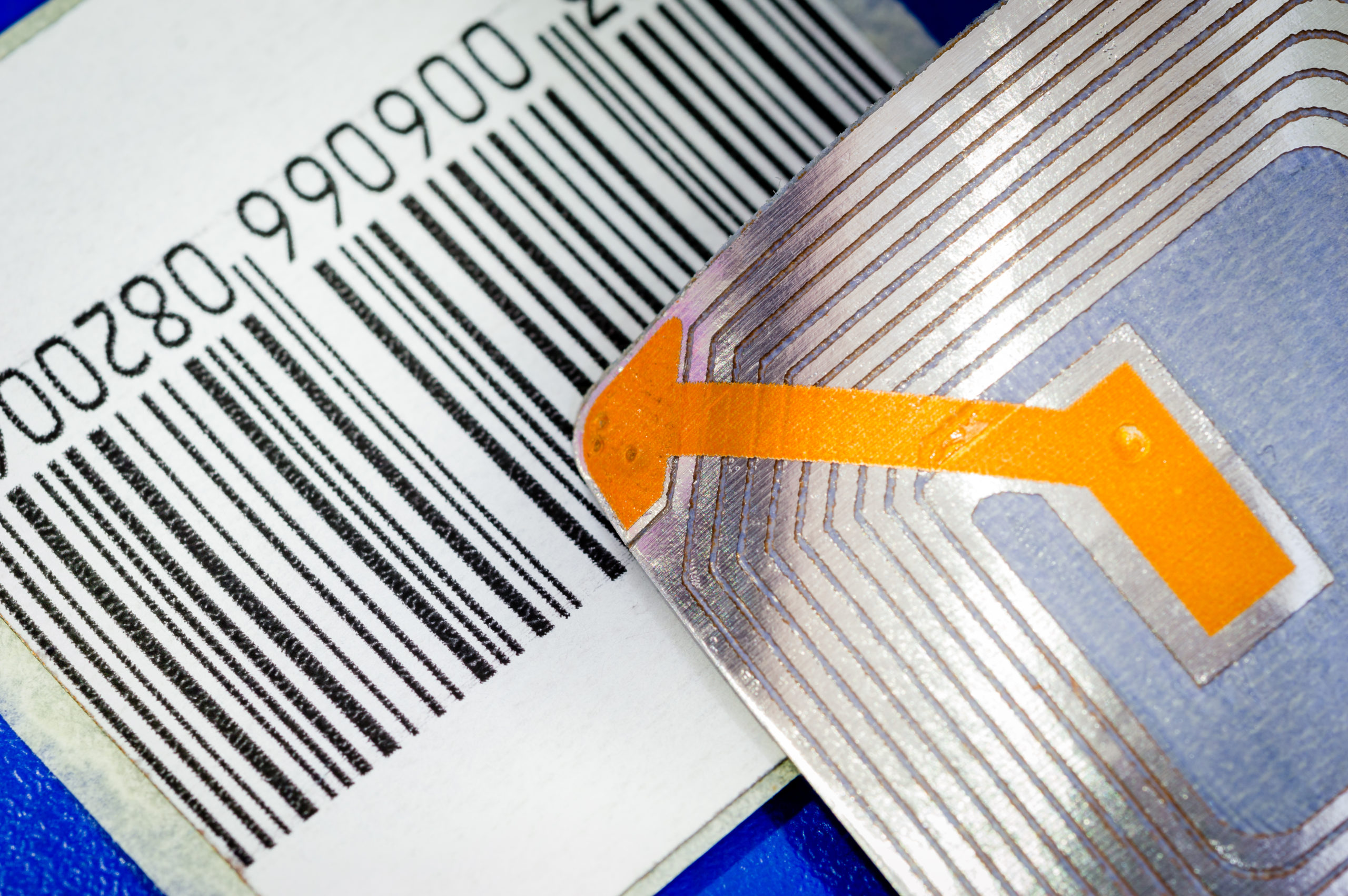RFID technology—short for “radio-frequency identification”—is often associated with controlling inventory and reducing theft. It uses electromagnetic fields to identify and track tags that have been attached to different items. RFID in retail means the item might set off an alarm if someone tries to lift it from a store. But it also means the item can be tracked throughout the entire supply chain through the last mile for greater accuracy and loss prevention.
Grocery offers additional possibilities for RFID in retail. Some believe it could be an element in “friction-free” grocery shopping, helping consumers find and purchase items without having to stand in line. It can also serve to make grocery operations more efficient. RFID codes can also be scanned all at once, unlike barcodes, which must be scanned individually, demanding a good deal of time and labor spend.
RFID in retail history
Forbes recently noted that RFID tags have been around since 1948, and “used for everything from subway passes to livestock tracking.” The technology requires only a small radio transponder, a radio receiver and a transmitter to work; a pulse from an RFID reader enables the RFID tag to transmit digital data such as an inventory number.
Back in 2003, Walmart significantly raised awareness of the technology by announcing that its top 100 suppliers would need to attach RFID tags to all incoming cases and pallets; the goal was to increase supply chain visibility, improve stock numbers, and increase customer satisfaction. It’s no surprise that other large retailers soon began following suit.
Grocers to give it a go?
The eye toward RFID in grocery, however, is likely related to two things: Avery Dennison, a long-established company best known for creating labels, has moved aggressively into the market. And Amazon has primed the pump for consumer expectations with its Amazon Go checkout-free convenience stores and Just Walk Out technology. Amazon opened its first Amazon Go Grocery store in early 2020, and made Just Walk Out available to other retailers not long after. Amazon Go uses a combination of computer vision, sensor fusion, and deep learning, much like what’s found in self-driving cars, to detect when items are taken off or returned to a retail shelf. Not quite the same as RFID, but with COVID-era customers still desiring easy, fast and contactless experiences, RFID may well benefit from the shift.
An Avery Dennison representative told Progressive Grocer in late 2019 that stores were still “two to three years away from having every item in grocery RFID tagged.” He envisioned grab-and-go sections being implemented before that. Grocers and convenience stores have to apply the individual RFID tags themselves, but he envisions a longer-term strategy in which brands would tag the items before they arrive at the store.
Major applications
RFID in retail certainly offers benefits for stores and customers alike. It’s not hard to extend the possibilities to grocers. With the rise in grocery ecommerce, i.e. buy online pickup in store and grocery delivery, due to the pandemic, RFID could certainly help track the availability of items—and potentially help decrease out-of-stocks. In addition to that increased product availability, overall benefits of RFID in retail include: inventory visibility, supply chain traceability, increased process efficiency, real-time data, and a transformed customer experience.
Barriers to adoption
It’s fair to say that the pandemic may still play out in unexpected technology advances and implementations. At this point, however, some barriers to RFID in retail remain. When compared to legacy barcode systems, for example, RFID tags are durable and efficient. But, even as RFIDs grow more cost effective, they’re still expensive. They require special readers and tags that need frequent replenishment, requiring both tags and readers. RFIDs are also challenging to implement, challenging those barcode systems that retailers have long been invested in and, in many ways, work well enough. When it comes to grocery, there’s also this: metal can deactivate the RFID antenna, and liquids can affect the signal’s reliability. What happens, then, with drinks in a metal shopping cart? Beyond these concerns, there’s the question of how much information is too much information in the last mile of the supply chain, and whether the RFID’s findings are immediately actionable.
Tagging the future
So what does the future hold for RFID in retail—or in grocery? The global RFID market overall is projected to reach $31.06 billion by 2026, representing a 2019-2026 compound annual growth rate 10.3 percent. As for direct impact in the grocery segment, that might be harder to predict. Who, after all, could have imagined the shifts that have come with 2020?
Regardless of segment or technology, however, one thing is and will continue to be certain: Careful attention to detail and maximization of data are essential in retail. RFID tracks merchandise across the supply chain, but doesn’t always help customers find and buy the products they want in the last mile. CB4 does. Watch how it works




